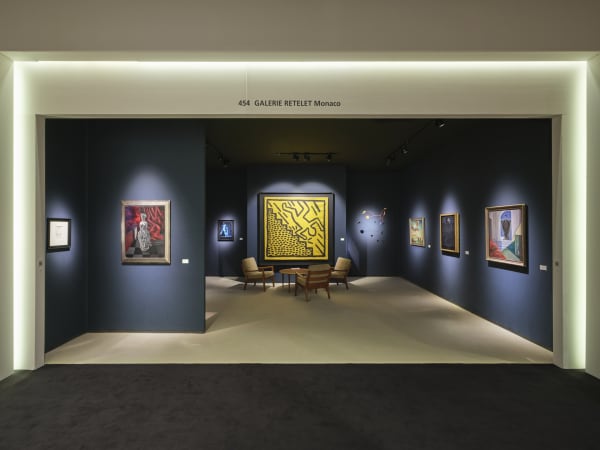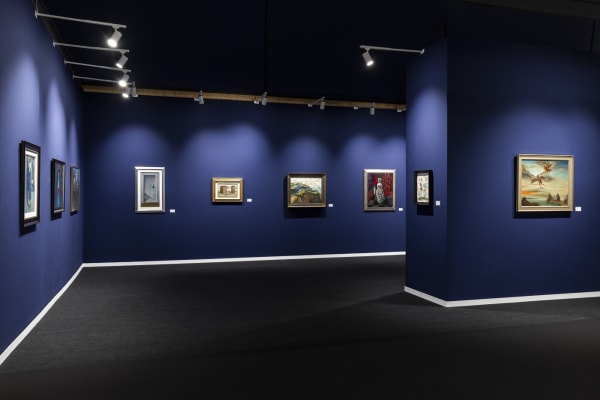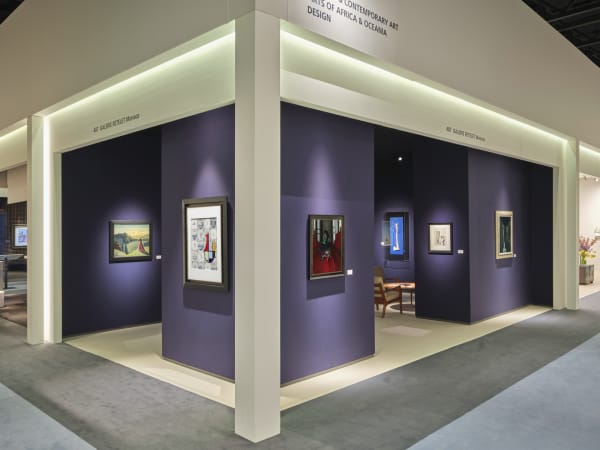Pol Bury Belgian, 1922-2005
Pol Bury, born on April 26, 1922, in Haine-Saint-Pierre near La Louvière, Belgium, was one of the most singular and innovative artists of the 20th century. Initially a surrealist painter, he would later become a pioneer of kinetic art, exploring slowness, time, and movement through sculpture and space.
He began his artistic studies in 1938 at the Academy of Fine Arts in Mons, where he trained in drawing and decoration. Early on, he became associated with the Belgian surrealist circle, notably through the poet Achille Chavée and the “Rupture” group. His first works, influenced by René Magritte and Yves Tanguy, already revealed a vivid imagination and a taste for poetic, enigmatic forms.
After World War II, Bury gradually distanced himself from surrealism and discovered abstraction. Around 1947–1948, he joined the Cobra group, founded by Christian Dotremont, Asger Jorn, and Pierre Alechinsky. Within this collective adventure, he experimented with the freedom of form and color, seeking a spontaneous and living art liberated from academic constraints. This period marked a turning point for him: the discovery of free gesture and chance led him to focus on the notion of movement in art.
In 1950, an exhibition of Alexander Calder’s “Mobiles” at the Galerie Maeght in Paris proved decisive. Fascinated by the silent, graceful motion of Calder’s works, Pol Bury began introducing movement into his own creations. He then co-founded the “Groupe Art Abstrait” and started creating reliefs in which geometric shapes seemed to shift or breathe. In 1953, he abandoned traditional painting and produced his first “mobile planes,” compositions in wood or metal where the viewer perceives barely perceptible movements, as if matter itself were alive.
By the late 1950s, Bury was incorporating motors into his sculptures—mechanical energy becoming the natural extension of his meditation on time and motion. Unlike other kinetic artists, however, he rejected speed and spectacle. In his work, movement is slow, almost meditative. Rather than startling the viewer, he sought to hold their gaze, inviting contemplation of even the subtlest tremor.
During the 1960s and 1970s, Pol Bury gained international recognition. His works were exhibited in major galleries and institutions, and in 1964 he represented Belgium at the Venice Biennale. He created large metal sculptures, “open and closed volumes,” as well as monumental fountains that incorporated water as a medium of movement. These fountains, installed in public spaces in Paris, New York, and Brussels, combined geometric rigor with organic fluidity—transforming water into rhythm, breath, and light.
A complete artist, Pol Bury was also a writer and thinker. He published texts filled with humor and insight, reflecting on slowness, gravity, time, and the absurdity of the art world. He also explored other mediums—engraving, jewelry, mirrors—always guided by curiosity and poetic subversion.
Until his death in Paris on September 28, 2005, Pol Bury never ceased to explore the relationship between movement and stillness, matter and time. His work, at the crossroads of sculpture, architecture, and visual poetry, continues to exert a powerful influence today. Through the deliberate slowness of his moving forms, he offered viewers the rare opportunity to experience the passage of time—not as something fleeting, but as something profoundly tangible.
-

TEFAF MAASTRICHT 2025
The surrealist activity and its legacy 15 - 20 Mar 2025Gallery Retelet is proud to participate for the second time at TEFAF. After having celebrated the Belgian Surrealist movement in 2024 we decided for 2025...Read more -

ART PARIS 2024
The Surrealist activity 4 - 7 Apr 2024Read more -

TEFAF MAASTRICHT 2024
The Surrealist activity in Belgium 9 - 14 Mar 2024For TEFAF, the Galerie Retelet will be proud to propose a booth that shows an overview of the historical Surrealist activity in Belgium. The year...Read more


